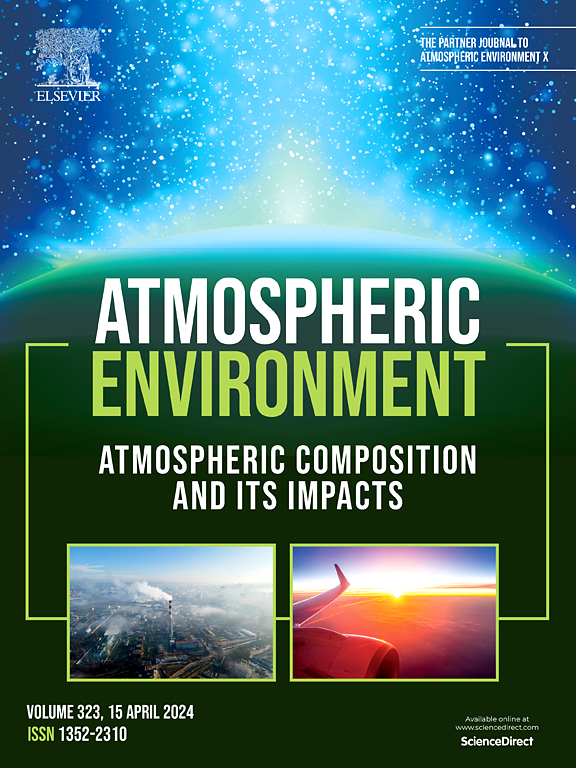Atmospheric degradation of biofuel cyclic esters initiated by chlorine atom: Product yields and ring-retaining oxidation vs. ring opening mechanisms
IF 4.2
2区 环境科学与生态学
Q2 ENVIRONMENTAL SCIENCES
引用次数: 0
Abstract
A product study was carried out for the reaction of γ-caprolactone and γ-heptalactone with Cl atoms at (298 ± 2) K and atmospheric pressure. The experiments were performed in a 480L glass multipass reactor with in situ FT-IR detection. The main products identified and quantified includes (in molar yield %): succinic anhydride (68 ± 2), propanoic acid (25 ± 1), acetaldehyde (59 ± 1), formaldehyde (10 ± 1) and acetic anhydride (26 ± 2) in the Cl atoms with γ-caprolactone reaction. Meanwhile, butanoic acid (26 ± 1), succinic anhydride (70 ± 2), propanaldehyde (63 ± 1) and propanoic acid (11 ± 1) were identified and quantified for Cl atoms with γ-heptalactone reaction. In addition, a chemical mechanism has been proposed taking into account the identified and quantified products. The mechanistic provided by the identified products, reveals that the degradation mechanisms can proceed either through ring opening or oxidation pathways. In these sense, the opening path leads to the carboxylic acids formation and the oxidation forms succinic anhydride. The succinic anhydride quantification, as the major product in both reactions, suggests that the oxidation ring is the most relevant channel in the reactions studied. Considering that the identified acids and anhydrides are of atmospheric importance, due to their potential for acidification of the troposphere and the atmospheric implications have been discussed.
求助全文
约1分钟内获得全文
求助全文
来源期刊

Atmospheric Environment
环境科学-环境科学
CiteScore
9.40
自引率
8.00%
发文量
458
审稿时长
53 days
期刊介绍:
Atmospheric Environment has an open access mirror journal Atmospheric Environment: X, sharing the same aims and scope, editorial team, submission system and rigorous peer review.
Atmospheric Environment is the international journal for scientists in different disciplines related to atmospheric composition and its impacts. The journal publishes scientific articles with atmospheric relevance of emissions and depositions of gaseous and particulate compounds, chemical processes and physical effects in the atmosphere, as well as impacts of the changing atmospheric composition on human health, air quality, climate change, and ecosystems.
 求助内容:
求助内容: 应助结果提醒方式:
应助结果提醒方式:


